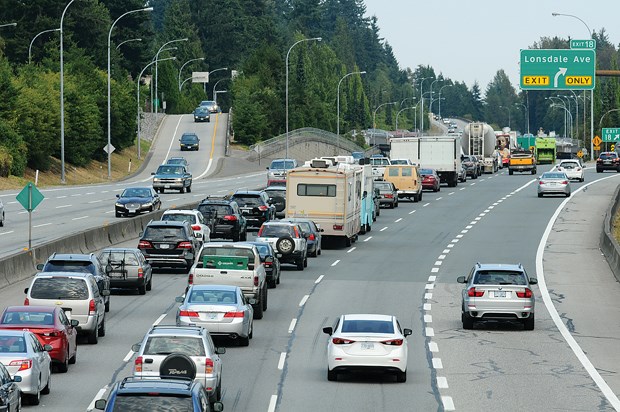A biweekly roundup of automotive news, good, bad and just plain weird.
VW's pollution woes: Das uh-oh
You couldn't have missed it - every major news organization has been seething at the discovery that Volkswagen's so-called clean diesel engines are anything but. Touted as a thrifty alternative to complex hybrid technology, the TDI engine was supposed to be a friend to both the eco-warrior and road-warrior alike.
Sadly, while VW's turbodiesel engines certainly delivered on the fuel economy front, their NOx emissions were much higher than advertised: try 4,000 per cent higher. When university researchers discovered this strange state of affairs, they delved deeper and it emerged that VW had set up their engine software to only produce acceptable emissions during testing. Get the car out in the real world, and all bets were off.
A staggering 11 million vehicles are affected by the issue, and the fallout for VW has been huge. Already CEO Martin Winterkorn has stepped down, and the company faces both huge fines and further penalties for those culpable.
Affected customers are already lining up for class action lawsuits, as well they should. Not only are many owners deeply uncomfortable with their cars belching noxious gasses, but a potential fix may well negatively affect fuel economy.
VW's TDI models have always done well in resale, but this blow looks to undo much of that good reputation. Add in a reputation for electrical foibles, the infamous sludge issue from several years ago, and oft-times expensive maintenance, and VW seems to be squandering every last bit of the goodwill its fans once had.
But here's the real takeaway lesson. VW is probably not the only automotive corporation to pull a stunt like this, and this event should silence those who would happily let corporations self-regulate. We need regulatory bodies in the automotive industry, both in safety and emissions, and they need to have the teeth to deal with stuff like this.
Will VW's brand image recover from the tarnish? Maybe. More importantly, will we learn our lesson, and keep a closer eye on those for whom, in the end, it's clearly all about the bottom line?
Porsche Mission E concept takes on Tesla
In many ways, the Tesla Model S has already supplanted the Porsche 911 as the Vancouver entrepreneur's ride of choice. It's fast, it makes a statement, and while the range would theoretically be restrictive if you had a long highway commute, it's plenty for the hemmed-in territories of the Lower Mainland.
Porsche takes a more global view of sales, but it's not like they haven't been paying attention to the way the California upstart has been capturing attention. A dual-motor machine with Ludicrous speed is a dream car for more and more people; and Porsche likes to be the one people dream of. Enter the Mission E Concept, revealed at the International Motor Show in Frankfurt. It's sleek, slick, and powered by a pair of electric motors identical to those used in the LeMans-winning 919 hybrid. Total power is 600 horsepower, a little less than Tesla's most powerful models, but range is an entirely acceptable 500 kilometres.
Even better is the Mission E's crazy 800-volt charging capacity. Given a proper set up, the car could be charged from a dead battery to 400-kilometre range in just 15 minutes. That's about the same as a gasoline fillup.
Porsche 911 range goes all-turbo
If the Mission E shows what a far-future Porsche might look like, the immediate future for the brand is turbocharging. Yes, we've had a 911 Turbo for years, but this is the dawn of the 911 small-t turbo: both the Carrera and Carrera S will drop their naturally aspirated six-cylinder engines for turbocharged units. The base Carrera now comes with a 3.0-litre engine making 370 h.p., and the S model sees a bump to 420 h.p. from the same displacement. Only the race-bred GT3 model retains a naturally aspirated engine.
The good is that emissions and fuel economy are improved - at least under ideal conditions, no? The bad is the end of some of that 911 character. Still, almost every European luxury brand has gone the same route, so why not Porsche? Mercedes-Benz puts turbocharged engines in almost their entire lineup (except the V-6 powered E350), and BMW is much the same. Soon, or so it would seem, the naturally aspirated engine will be a thing of the past.
2016 Honda Civic revealed
Faith in the German car companies shaken? Not to worry, Honda's here to woo you back. The Civic is closing in on two decades of being the best-selling car in Canada, and this 10th generation is laying it all on the table. First up is a bold new look, part Euro-Civic and part mini-Accord. The interior is also significantly less plasticky, and there'll be a proper hatchback variant for those who want it.
Under the hood is a standard 2.0-litre engine in base models and an optional 1.5-litre turbocharged four cylinder with more torque and better cruising fuel economy. These will both be paired with CVT transmissions, which while hardly a driving enthusiast's favourite, do very well in real-world performance (see: CVT-equipped WRX). Best of all is the return of the Civic Type-R to North America. Actually, never mind return, we've never before got a Civic this hot. Perhaps, after so long on the sales chart, Honda finally thinks we're ready for the R. I'll say so!
Watch this space for all the week's best and worst of automotive news, or submit your own auto oddities to [email protected].



